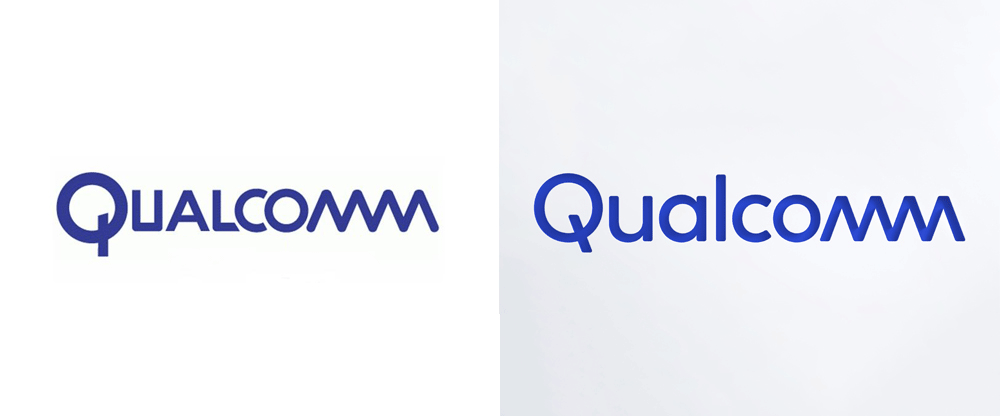INSIGHTS
Texas Instruments saw a 23% increase in revenue following the launch of its creative branding strategy for its Medical Business Unit.
Qualcomm's average monthly website visitors increased by 70% following the debut of Spark, the company's internal news website.
After implementing an extensive social media marketing campaign, Atmel had 60,000 Twitter with 38,000 LinkedIn followers, and received "as many blog post shares as all other 39 semi [conductor] companies put together."
Three companies that have used creative marketing strategies to sell semiconductors are Texas Instruments, Qualcomm, and Atmel. Please find my methodology and detailed case studies involving these three companies below.
Finding case studies of semiconductor manufacturers or computer hardware companies that have utilized creative branding strategies and advertisements provided to be extremely difficult. This is likely because the inner parts of computers are rarely viewed as "creative." However, it appears this theory could be changing, as in the past three years, there have been several thought leadership pieces published that discuss how to make semiconductor marketing strategies more creative. These articles and white papers could provide some insight into better marketing and advertising strategies for internal computer part company and manufacturers.
 CASE STUDY #1 — TEXAS INSTRUMENTS
CASE STUDY #1 — TEXAS INSTRUMENTS
CHALLENGE:
Despite the fact that Texas Instruments (TI)has lifestyle but impactful way to "explain the new products, emotionally connect with customers, generate brand awareness, and educate and equip
SOLUTION
CSCreative, a branding firm, created a "branding blueprint (for TIMBU) that included a new name: TI HealthTech" and a newtagline from the [ engineers
The new branding was launched at the Consumer Electronics Show, the industry's largest trade show. In addition to the "cohesive and polished branding," therewas
RESULTS:
The internal training sessions empowered the sales team to "be brand advocates and to drive their message to more divisions at prospective companies." As a result, TI was able to expand its customer base and saw "a tremendous increase in web activity, data sheet downloads and product design wins." Overall, the company saw a 23% increase in revenue following the branding launchto
 CASE STUDY #2 — QUALCOMM
CASE STUDY #2 — QUALCOMM
CHALLENGE
Qualcomm, a semiconductor company that specializes in mobile technologies, needed to find a way to target B2Bcustomers though
Liya Sharif, Qualcomm's senior director of global marketing, said, "We are a b-to-b company that doesn't spend a lot on consumer advertising. So we had to find a more nimble and asymmetrical way of targeting consumers. And it became clear that we needed to get closer to consumers in terms of them being familiar [with] why certain technologies matter on their phone." As such, Qualcomm needed to focus more on reaching "early adopters and tech-savvy consumers", but not to actually sell its products. Instead, the goal was to sell the brand through teaching "them about the power of mobile and...that
SOLUTION
Qualcomm created Spark, "an internal news website living on Qualcomm’s website" that is designed to "engage and cultivate discussions on topics such as technology and innovation with tech-savvy consumers, rather than bombarding them with advertisements." The ultimate goal of this content-marketing strategy was to educate "consumers on the power of what was inside their mobile devices." Recently, Qualcomm has also unveiled a "visually upgraded version of Spark on their blog called OnQ," which is intended to keep customers updated on Qualcomm's technological breakthroughs and gives its "perspective on where technology is headed."
Using a team of journalists, marketers, and producers, Qualcomm's Sparkbrings
RESULTS
The company has been so successful at creating brand awareness through Spark and OnQ that it has "effectively removed ‘marketing’ from ‘content marketing’ and [has] inclined towards being a publisher rather than a marketer. This kind of marketing wouldn’t have been possible with old-age textbook marketing gimmicks." When Spark first debuted in 2013, Qualcomm's "average monthly site visitors increased by 70 percent, and [the company] saw a lift of 28 percent in monthly uniques."
 CASE STUDY #3 ATMEL
CASE STUDY #3 ATMEL
CHALLENGE
Until 2011, Atmel, a semiconductor manufacturer, was "focused on continual price and performance improvementsto
1. Develop communities of users
2. Develop an "extensive social media presence"
3. Create a marketing model that allowed Atmel to "close the loop (generate revenue) from the marketing activities."
According toArts
SOLUTION
Arts recognized that selling semiconductors "used to be pretty linear. You’d have a product, go talk to an existing account and explain why they should be buying it." Now, however, semiconductor companiesare often meeting
Arts established not only a company blog, but also built up Amtel's social media footprint to include "Twitter, Facebook, LinkedIn, Google Plus, YouTube and Instagram." In addition, Amtel's customer service team "responds to questions from professionals, students, tinkerers and hobbyists regarding our hardware, software and tools."
RESULTS
Prior to Atmel merging with Intel in 2016, Atmel was receiving "as many blog post shares as all other 39 Semi companies put together." In addition, the company had 60,000 Twitter followers, 38,000 LinkedIn followers, and its blog had received more than 3 million views. The results have shown that "even a B2B marketplace like semiconductors can use the power of community to sell products."
Texas Instruments saw a 23% increase in revenue following the launch of its creative branding strategy for its Medical Business Unit.
Qualcomm's average monthly website visitors increased by 70% following the debut of Spark, the company's internal news website.
After implementing an extensive social media marketing campaign, Atmel had 60,000 Twitter with 38,000 LinkedIn followers, and received "as many blog post shares as all other 39 semi [conductor] companies put together."
Three companies that have used creative marketing strategies to sell semiconductors are Texas Instruments, Qualcomm, and Atmel. Please find my methodology and detailed case studies involving these three companies below.
Finding case studies of semiconductor manufacturers or computer hardware companies that have utilized creative branding strategies and advertisements provided to be extremely difficult. This is likely because the inner parts of computers are rarely viewed as "creative." However, it appears this theory could be changing, as in the past three years, there have been several thought leadership pieces published that discuss how to make semiconductor marketing strategies more creative. These articles and white papers could provide some insight into better marketing and advertising strategies for internal computer part company and manufacturers.
After extensive research into academic studies, industry white papers, and marketing company case studies, I was able to identify three U.S. Companies that have taken creative approaches toward
Please note that due to the lack of recent examples of semiconductor or computer hardware case studies showing creative marketing and branding examples, I was forced to expand my search to earlier case studies. However, the marketing strategies for Texas Instruments and Qualcomm are still ongoing. It is also safe to say that if it hadn't been for Amtel's merger with Intel in 2016, its social media marketing strategy would still be the most successful in the industry. As such, I feel confident the branding and marketing strategies utilized by these three companies are not only still relevant, they were actually ahead of their time.
 CASE STUDY #1 — TEXAS INSTRUMENTS
CASE STUDY #1 — TEXAS INSTRUMENTSCHALLENGE:
Despite the fact that Texas Instruments (TI)
SOLUTION
CSCreative, a branding firm, created a "branding blueprint (for TIMBU) that included a new name: TI HealthTech" and a new
The new branding was launched at the Consumer Electronics Show, the industry's largest trade show. In addition to the "cohesive and polished branding," there
RESULTS:
The internal training sessions empowered the sales team to "be brand advocates and to drive their message to more divisions at prospective companies." As a result, TI was able to expand its customer base and saw "a tremendous increase in web activity, data sheet downloads and product design wins." Overall, the company saw a 23% increase in revenue following the branding launch
 CASE STUDY #2 — QUALCOMM
CASE STUDY #2 — QUALCOMMCHALLENGE
Qualcomm, a semiconductor company that specializes in mobile technologies, needed to find a way to target B2B
Liya Sharif, Qualcomm's senior director of global marketing, said, "We are a b-to-b company that doesn't spend a lot on consumer advertising. So we had to find a more nimble and asymmetrical way of targeting consumers. And it became clear that we needed to get closer to consumers in terms of them being familiar [with] why certain technologies matter on their phone." As such, Qualcomm needed to focus more on reaching "early adopters and tech-savvy consumers", but not to actually sell its products. Instead, the goal was to sell the brand through teaching "them about the power of mobile and...
SOLUTION
Qualcomm created Spark, "an internal news website living on Qualcomm’s website" that is designed to "engage and cultivate discussions on topics such as technology and innovation with tech-savvy consumers, rather than bombarding them with advertisements." The ultimate goal of this content-marketing strategy was to educate "consumers on the power of what was inside their mobile devices." Recently, Qualcomm has also unveiled a "visually upgraded version of Spark on their blog called OnQ," which is intended to keep customers updated on Qualcomm's technological breakthroughs and gives its "perspective on where technology is headed."
Using a team of journalists, marketers, and producers, Qualcomm's Spark
RESULTS
The company has been so successful at creating brand awareness through Spark and OnQ that it has "effectively removed ‘marketing’ from ‘content marketing’ and [has] inclined towards being a publisher rather than a marketer. This kind of marketing wouldn’t have been possible with old-age textbook marketing gimmicks." When Spark first debuted in 2013, Qualcomm's "average monthly site visitors increased by 70 percent, and [the company] saw a lift of 28 percent in monthly uniques."
Another reason this endeavor has been so successful is because Qualcomm hosts Spark directly on the company's website. This means that "the linkage between the stories covered and the brand were
 CASE STUDY #3 ATMEL
CASE STUDY #3 ATMELCHALLENGE
Until 2011, Atmel, a semiconductor manufacturer, was "focused on continual price and performance improvements
1. Develop communities of users
2. Develop an "extensive social media presence"
3. Create a marketing model that allowed Atmel to "close the loop (generate revenue) from the marketing activities."
According to
SOLUTION
Arts recognized that selling semiconductors "used to be pretty linear. You’d have a product, go talk to an existing account and explain why they should be buying it." Now, however, semiconductor companies
Arts established not only a company blog, but also built up Amtel's social media footprint to include "Twitter, Facebook, LinkedIn, Google Plus, YouTube and Instagram." In addition, Amtel's customer service team "responds to questions from professionals, students, tinkerers and hobbyists regarding our hardware, software and tools."
RESULTS
Prior to Atmel merging with Intel in 2016, Atmel was receiving "as many blog post shares as all other 39 Semi companies put together." In addition, the company had 60,000 Twitter followers, 38,000 LinkedIn followers, and its blog had received more than 3 million views. The results have shown that "even a B2B marketplace like semiconductors can use the power of community to sell products."
CONCLUSION
Texas Instruments, Qualcomm, and Atmel are all semiconductor companies that have abandoned traditional computer hardware marketing strategies in favor of creative branding and marketing methods that have proven to increase revenue, develop brand awareness, and reach more customers through social media.
Texas Instruments, Qualcomm, and Atmel are all semiconductor companies that have abandoned traditional computer hardware marketing strategies in favor of creative branding and marketing methods that have proven to increase revenue, develop brand awareness, and reach more customers through social media.
